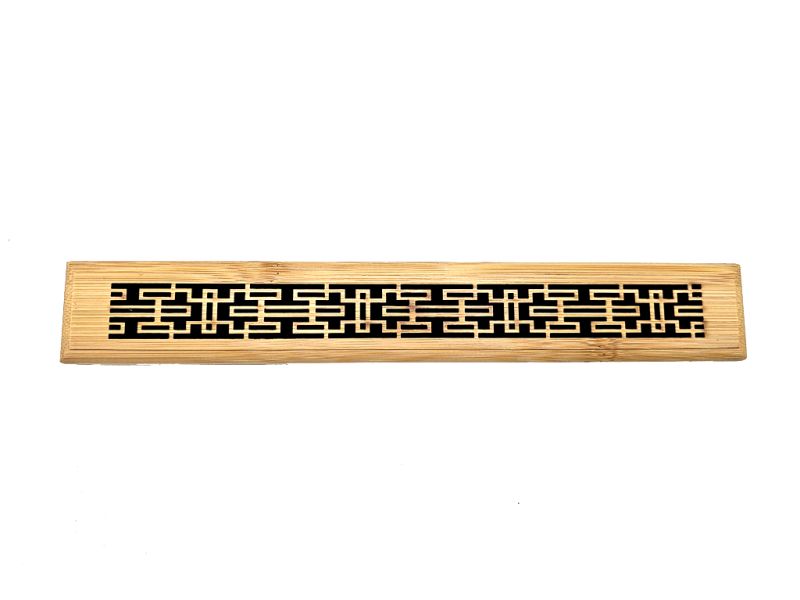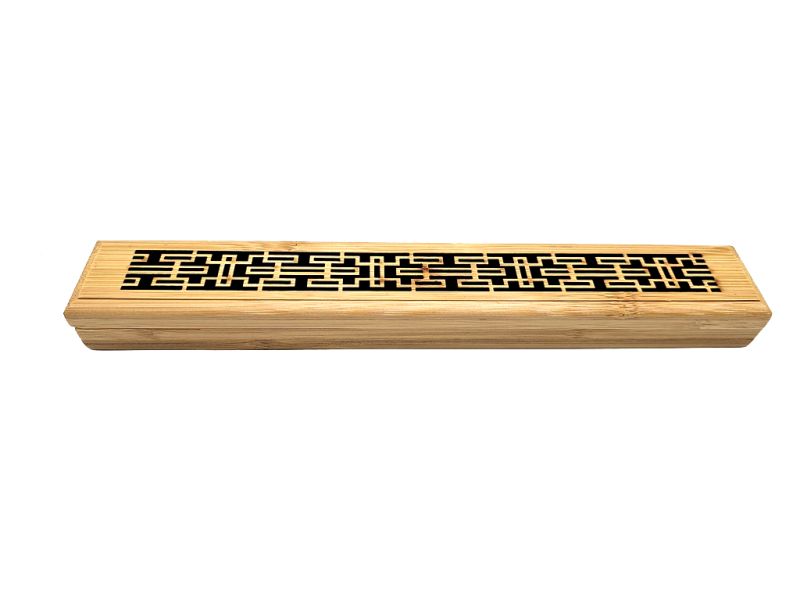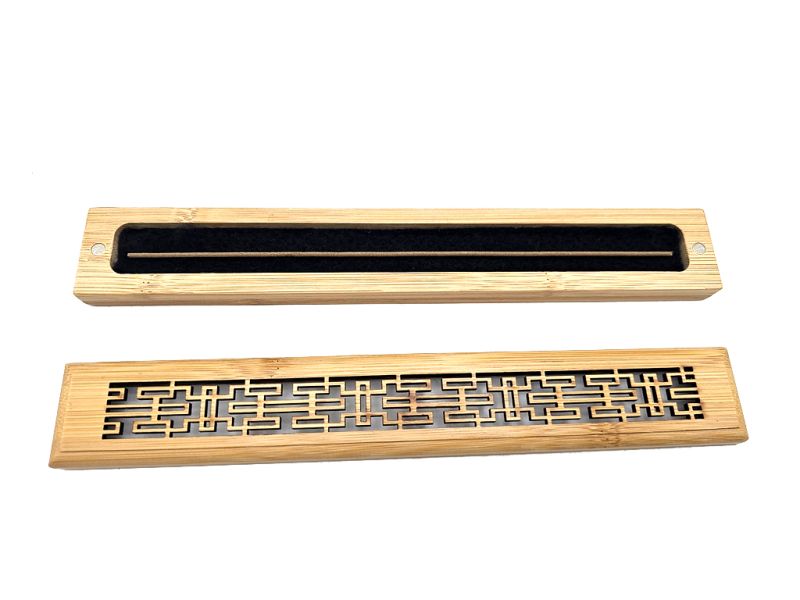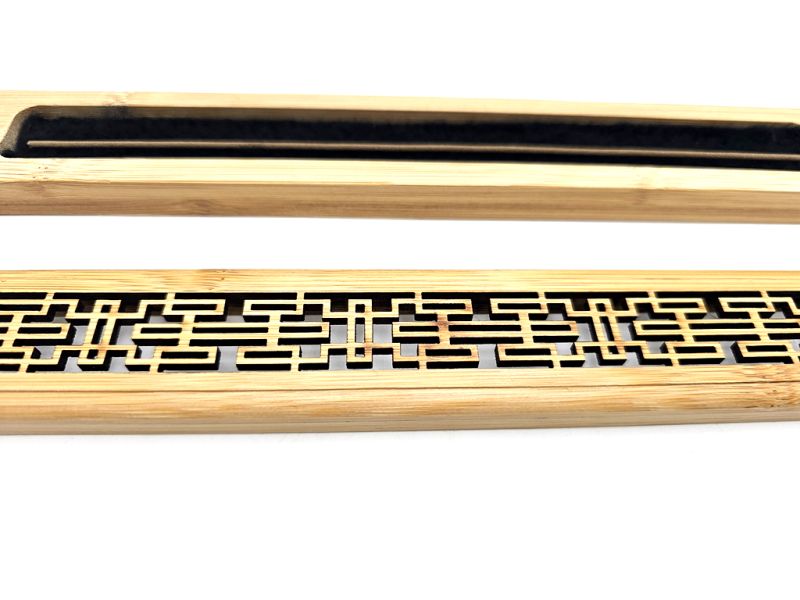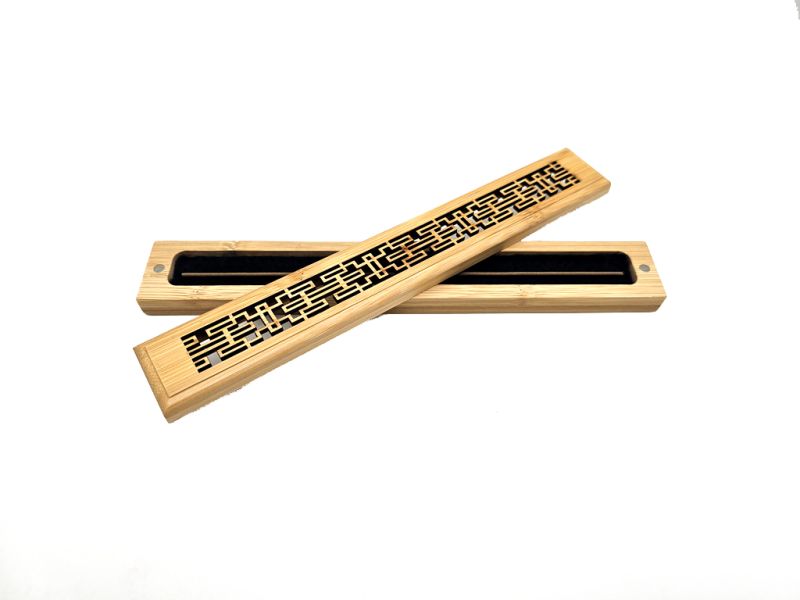Chinese Bamboo Incense Burner
Modern Incense Holder - Chinese - Bamboo Incense Burners
Handcrafted Incense Holder:
Our incense holders have a modern design, although they are directly inspired by traditional Chinese artistic objects. These are handcrafted pieces made from natural materials. Each of the incense holders we offer is an original creation, born from the inspiration and imagination of a Chinese artist. For his creations, he endeavored to bring a touch of modernity to an object that is part of China's traditional culture.
Our incense holders have a dual function. Indeed, their design and aesthetics make them perfect objects for interior home decoration. Moreover, they allow benefiting from the advantages of incense, which brings serenity and calm. The scent of incense has the power to calm people present in the same room and promotes concentration. The Chinese artist who created our incense holders imagined a play of smoke that helps relax by following its path.
Bamboo incense burners are much more than just an accessory for diffusing pleasant aromas in your home. They embody elegance, refinement and high-quality craftsmanship. Used for centuries for spiritual rituals and to create a calming atmosphere, these incense burners have become a must-have for those looking to combine beauty and functionality.
History of Incense in China:
Incense has been used since ancient times in China, as well as in Europe, Africa, America, India, and the rest of Asia. At that time, and for millennia, incense was primarily used for religious and spiritual rites. The great ancient religions used a large amount of incense, consequently its trade quickly became a very lucrative activity. At that time, India and the countries in the southern Arabian Peninsula were the largest production areas in the world. Numerous “incense routes” were created to serve Europe and the rest of Asia, mainly by land.
The composition of incense varied from one continent to another, but the most used resin is produced from trees of the genus Boswellia from the Burseraceae family. This tree is native to Oman, but it is also cultivated in India, Yemen, and Somalia. It is the male tree that produces the resin used to make incense, but it must be at least 10 years old to obtain good quality resin. To harvest the resin, the bark of this tree is incised by removing a long and narrow strip. Then, this area is scraped to collect the resin concretions that fall into a container. Upon contact with air, the resin hardens and is harvested two or three weeks later.
During antiquity, in China, incense was considered more precious than gold. It was a prestigious material, on par with jade. In Egypt, the etymology of the word incense refers to the divine, as in Greece or among the Romans. Incense is also widely used by Christians, as it is part of the gifts that the Magi brought to Christ. The smoke from burning incense symbolizes in this religion the prayers that rise to the sky and to God. During Christian ceremonies, incense is burned in censers that are swung to diffuse its fragrance throughout the religious building.
Incense was very present in the rites of pagan religions, and it was quickly adopted by the great monotheistic religions for their own rites. Moreover, the composition of incense is mentioned in the Bible, as God supposedly gave the “recipe” for incense to Moses. Asian and American shamans quickly discovered that incense brought inner peace and serenity, the foundations of well-being according to them. They also made sick people inhale incense to treat certain diseases. For this purpose, they placed the resin on glowing charcoal or on a stone heated to incandescence.











